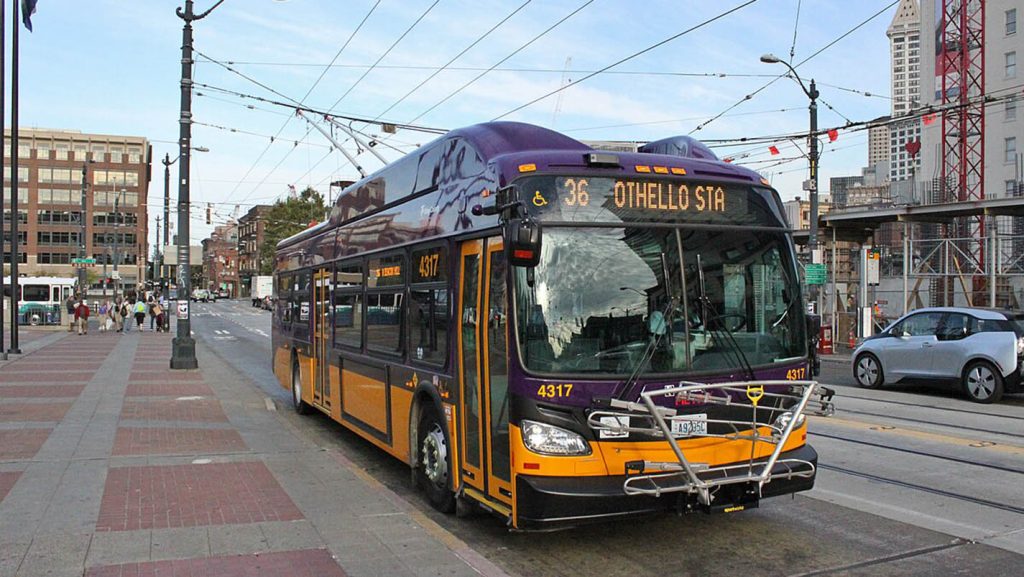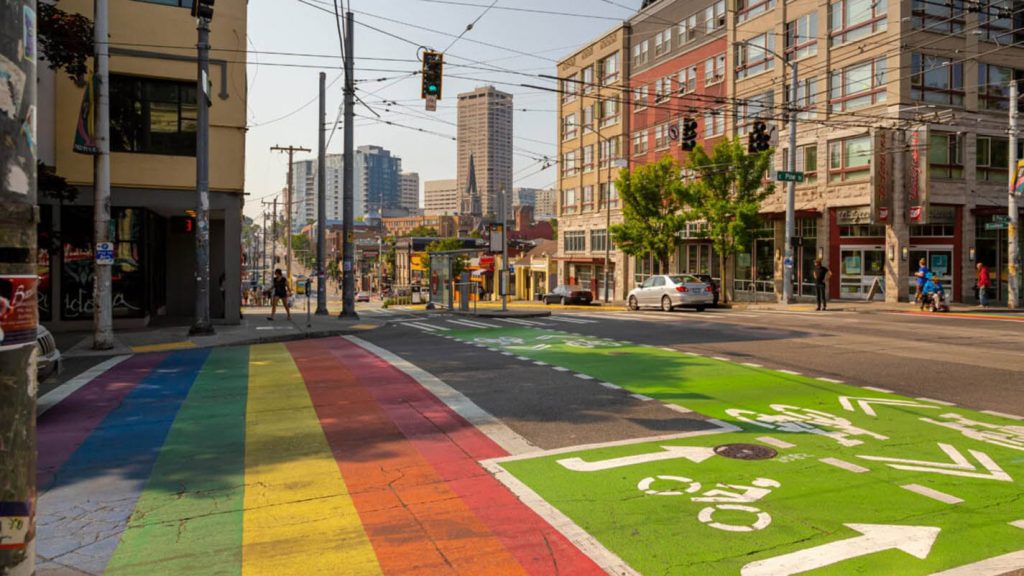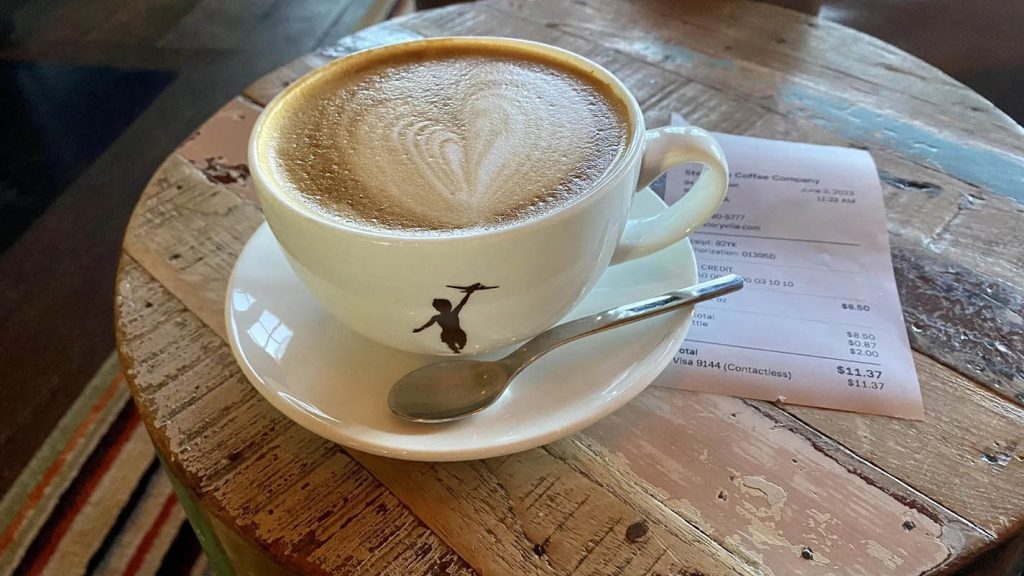Seattle, known for its iconic skyline, lush green surroundings, and vibrant cultural scene, is a city that offers a rich blend of urban and natural experiences. However, like any bustling metropolis, Seattle has its quirks and nuances that can make getting around a bit tricky for first-time visitors. Having spent a considerable amount of time exploring this beautiful city, I’ve gathered some essential tips to help you navigate Seattle like a true local. From understanding the city’s layout to mastering public transportation and finding the best spots to eat and relax, this guide covers everything you need to make the most of your Seattle experience.
1. Understanding Seattle’s Layout and Neighborhoods
Seattle is a city of neighborhoods, each with its own distinct personality and charm. Before diving into the nitty-gritty of getting around, it’s important to get a sense of the city’s layout.
Seattle is located in the Pacific Northwest, nestled between Puget Sound to the west and Lake Washington to the east. The city is divided into several major regions: Downtown, Capitol Hill, Queen Anne, South Lake Union, Ballard, Fremont, and the University District, to name a few.
- Downtown Seattle: The heart of the city, home to major attractions like Pike Place Market, the Space Needle, and the Seattle Art Museum.
- Capitol Hill: Known for its vibrant nightlife, diverse dining options, and beautiful parks, Capitol Hill is a hub of culture and activity.
- Queen Anne: A residential neighborhood with stunning views of the city skyline and Mount Rainier, as well as attractions like the Space Needle and the Museum of Pop Culture.
- Ballard: A trendy area known for its Scandinavian heritage, microbreweries, and the Ballard Locks.
- Fremont: An artsy, eclectic neighborhood with quirky attractions like the Fremont Troll and a lively Sunday market.
- University District: Home to the University of Washington, this area is bustling with students and offers a range of affordable dining and shopping options.
Navigating the Hills
Seattle is famously hilly, especially in areas like Queen Anne and Downtown. The steep inclines can be challenging for pedestrians, so be prepared for some uphill walks. If you’re not up for the climb, consider using public transportation or a rideshare service to get around.
The Street Grid
Seattle’s street grid can be confusing, especially with its combination of numbered avenues and streets. Here’s a quick breakdown:
- Avenues generally run north-south, while streets run east-west.
- The city is divided into four quadrants: NW, NE, SW, and SE. Make sure to pay attention to these designations when navigating, as they can make a big difference.
- Downtown Seattle doesn’t follow the typical grid pattern, so it’s easy to get turned around. When in doubt, use a map or GPS.
2. Mastering Public Transportation
Seattle has a robust public transportation system that’s both efficient and eco-friendly. Here’s how to make the most of it:

Seattle’s Bus System
The King County Metro bus system is the backbone of public transportation in Seattle. Buses are frequent and cover most of the city, making them a reliable option for getting around.
- ORCA Card: Locals use the ORCA card, a rechargeable smart card that works on buses, light rail, ferries, and more. You can purchase one at light rail stations, online, or at select retailers. It’s the easiest way to pay for public transit and offers discounted fares compared to paying in cash.
- Bus Etiquette: When riding the bus, be sure to move to the back if you’re standing to allow others to board. Also, have your ORCA card or fare ready before you board to keep the line moving.
Light Rail and Streetcars
Seattle’s light rail system, known as Link, is a quick and convenient way to travel between major destinations, including Sea-Tac Airport, Downtown, Capitol Hill, and the University District.
- Link Light Rail: The light rail runs from Sea-Tac Airport to Northgate, with stops at key locations like the International District, Capitol Hill, and the University of Washington. It’s a great option for avoiding traffic and getting to popular areas quickly.
- Seattle Streetcar: There are two streetcar lines in Seattle: the South Lake Union line and the First Hill line. The streetcar is a slower but scenic way to travel between neighborhoods like South Lake Union, Capitol Hill, and the International District.
Ferry System
Seattle’s ferry system is an integral part of local life, providing both transportation and stunning views of Puget Sound. Ferries connect Seattle to several nearby islands and peninsulas, including Bainbridge Island, Bremerton, and Vashon Island.
- Bainbridge Island: A popular day trip destination, the ferry to Bainbridge Island departs from the downtown Seattle waterfront. The 35-minute ride offers incredible views of the Seattle skyline and surrounding mountains.
- Ferry Etiquette: If you’re driving onto the ferry, arrive early to ensure a spot, especially during peak times. Walk-on passengers can typically board up until the ferry departs, but it’s always good to arrive a few minutes ahead of time.
Rideshare Services
For times when public transportation isn’t convenient, rideshare services like Uber and Lyft are widely available in Seattle. They’re particularly useful for late-night travel or getting to more remote locations. Keep in mind that prices can surge during peak hours, especially after events or during rush hour.
3. Driving in Seattle: What to Know
If you’re planning to rent a car or drive in Seattle, there are a few things you should know:
Traffic Patterns
Seattle’s traffic can be notoriously slow, particularly during rush hours (7:00-9:00 AM and 4:00-6:30 PM). Here are some tips to avoid getting stuck:
- Avoid I-5 During Peak Hours: Interstate 5 (I-5) is the main north-south freeway running through Seattle, and it can get very congested during rush hour. If possible, plan your trips to avoid driving on I-5 during these times.
- Use the Waze App: I found that the Waze app was particularly helpful for navigating Seattle’s traffic. It provides real-time traffic updates and suggests alternative routes.
Parking in Seattle
Finding parking in Seattle, especially downtown, can be challenging and expensive. Here’s how to manage:
- Street Parking: Seattle has metered street parking throughout the city. Meters typically operate from 8:00 AM to 8:00 PM, Monday through Saturday, with free parking on Sundays and holidays. Be sure to check the signs for time limits and restrictions.
- Parking Garages: There are several parking garages downtown, but rates can be steep, especially near popular attractions. If you’re planning to spend the day in one area, it might be worth the cost for the convenience.
- Residential Parking Zones: Many residential neighborhoods have restricted parking zones (RPZs) where you need a permit to park for more than a few hours. Pay close attention to the signs to avoid getting ticketed or towed.
Navigating the HOV Lanes
Seattle has High Occupancy Vehicle (HOV) lanes on some of its major highways, including I-5 and I-405. These lanes are reserved for vehicles with two or more passengers during peak hours. If you’re driving with others, using the HOV lanes can help you bypass some of the worst traffic.
4. Exploring Seattle’s Best Neighborhoods
Capitol Hill
Capitol Hill is Seattle’s cultural hub, known for its vibrant nightlife, diverse dining options, and beautiful parks. Here’s what to check out:

- Volunteer Park: This expansive park is home to the Volunteer Park Conservatory, the Seattle Asian Art Museum, and stunning views of the city from the Water Tower. It’s a perfect spot for a leisurely afternoon.
- Pike/Pine Corridor: The Pike/Pine Corridor is the heart of Capitol Hill’s nightlife scene. It’s packed with bars, restaurants, and music venues. For a taste of local craft beer, I recommend stopping by Optimism Brewing.
- Capitol Hill Farmers Market: Held every Sunday, this year-round farmers market offers fresh produce, local crafts, and delicious food trucks. It’s a great way to support local vendors and enjoy a relaxed Sunday morning.
Ballard
Ballard is a trendy neighborhood with a rich Scandinavian heritage, known for its microbreweries, seafood restaurants, and waterfront parks.
- Ballard Locks and Fish Ladder: The Hiram M. Chittenden Locks, commonly known as the Ballard Locks, are a must-visit. You can watch boats pass through the locks and observe salmon making their way up the fish ladder.
- Ballard Avenue: This historic street is lined with boutique shops, cafes, and some of Seattle’s best restaurants. Don’t miss The Walrus and the Carpenter, a renowned oyster bar.
- Golden Gardens Park: Located on the shores of Puget Sound, Golden Gardens Park offers beautiful beaches, picnic areas, and hiking trails. It’s a perfect spot to catch a sunset.
Fremont
Known as “The Center of the Universe,” Fremont is an artsy, eclectic neighborhood with a quirky charm.
- Fremont Troll: This giant sculpture, hidden under the Aurora Bridge, is one of Seattle’s most famous public artworks. It’s a fun and unusual photo op.
- Fremont Sunday Market: This weekly market features a mix of antiques, handmade goods, and delicious street food. It’s a great place to find unique souvenirs and enjoy the local atmosphere.
- Theo Chocolate Factory Tour: Fremont is home to Theo Chocolate, a popular organic and fair-trade chocolate company. Their factory tour is both educational and delicious, and you’ll get plenty of samples to enjoy.
South Lake Union
South Lake Union (SLU) is a rapidly growing neighborhood, home to tech giants like Amazon and the beautiful Lake Union waterfront.
- Museum of History & Industry (MOHAI): Located in the heart of SLU, MOHAI offers a fascinating look at Seattle’s history, from its indigenous roots to its tech boom.
- Lake Union Park: This waterfront park is a lovely spot for a picnic or a leisurely stroll. You can also rent kayaks or paddleboards to explore the lake.
- Denny Park: Seattle’s oldest park, Denny Park, offers a quiet retreat in the middle of the city. It’s a nice place to relax and enjoy the greenery.
Queen Anne
Queen Anne is a residential neighborhood with stunning views of the city and several key attractions.
- Kerry Park: For the quintessential Seattle photo, head to Kerry Park. The view of the skyline, with the Space Needle in the foreground and Mount Rainier in the background, is breathtaking.
- Space Needle: No trip to Seattle is complete without a visit to the Space Needle. The observation deck offers panoramic views of the city and beyond. I recommend going early in the morning or late in the evening to avoid the crowds.
- Seattle Center: This 74-acre complex is home to the Space Needle, the Museum of Pop Culture (MoPOP), and the Chihuly Garden and Glass. It’s a great area to spend a day exploring.
5. Dining Like a Local
Seattle is a food lover’s paradise, with a culinary scene that reflects the city’s diverse population and access to fresh, local ingredients. Here are some dining tips:
Seafood
Seattle is famous for its seafood, particularly its salmon, oysters, and Dungeness crab. Some of my favorite seafood spots include:
- Pike Place Chowder: Located in Pike Place Market, this award-winning chowder spot is a must-visit. The New England clam chowder is legendary, but they also offer a variety of other chowders, including a delicious smoked salmon chowder.
- Elliott’s Oyster House: For a more upscale seafood experience, head to Elliott’s on the waterfront. Their oyster selection is extensive, and the views of Puget Sound are unbeatable.
- The Crab Pot: If you’re in the mood for a fun, messy meal, The Crab Pot is the place to go. Their signature dish is a seafood feast served directly on your table, where you can dig in with your hands.
Coffee Culture
Seattle is synonymous with coffee, and while Starbucks might be the city’s most famous export, there are plenty of local coffee shops worth visiting.
- Victrola Coffee Roasters: With locations in Capitol Hill and Beacon Hill, Victrola is known for its expertly roasted coffee and welcoming atmosphere. It’s a great spot to relax with a cup of coffee and people-watch.
- Espresso Vivace: Located in Capitol Hill, Espresso Vivace is renowned for its perfectly crafted espresso drinks. The baristas are true artists, and the coffee is consistently excellent.
- Storyville Coffee: This hidden gem is located in Pike Place Market. The cozy, intimate setting is perfect for enjoying a latte and a pastry while taking in views of the market.

International Cuisine
Seattle’s diverse population means there’s no shortage of international cuisine to explore. Here are a few spots I recommend:
- Din Tai Fung: This popular Taiwanese chain is famous for its xiaolongbao (soup dumplings). The Seattle location in University Village is always busy, but the food is worth the wait.
- Revel: Located in Fremont, Revel offers a unique take on Korean cuisine, with dishes like short rib dumplings and kimchi pancakes. The flavors are bold and inventive.
- Tamarind Tree: For delicious Vietnamese food, head to Tamarind Tree in the International District. The pho is excellent, and the atmosphere is warm and inviting.
6. Weather and What to Pack
Seattle’s weather is famously unpredictable, with frequent rain showers and cloudy days. Here’s how to prepare:
Dress in Layers
Seattle’s weather can change quickly, so dressing in layers is key. Even in the summer, mornings and evenings can be cool, while the afternoons can be warm.
- A Waterproof Jacket: A good waterproof jacket is essential in Seattle. Look for one that’s lightweight and breathable, so you can easily wear it over other layers.
- Comfortable Shoes: With all the walking you’ll be doing, comfortable shoes are a must. Opt for waterproof footwear, especially if you’re visiting during the rainy season.
Embrace the Rain
Locals don’t let the rain stop them from enjoying the outdoors, and you shouldn’t either. Invest in a good umbrella, or better yet, a waterproof hat. Many Seattleites prefer to forgo umbrellas altogether and opt for waterproof jackets with hoods instead.
Summer Packing Tips
If you’re visiting in the summer, don’t forget to pack sunscreen and sunglasses. While Seattle might be known for its rain, summers can be surprisingly sunny and warm, with temperatures often reaching the high 70s or low 80s Fahrenheit.
Enjoying Seattle Like a Local
Seattle is a city that rewards exploration, and the more you get to know it, the more you’ll fall in love with its unique charm. Whether you’re sipping coffee in a cozy Capitol Hill café, watching the sunset from Golden Gardens, or navigating the bustling streets of downtown, these tips will help you experience Seattle like a true local.